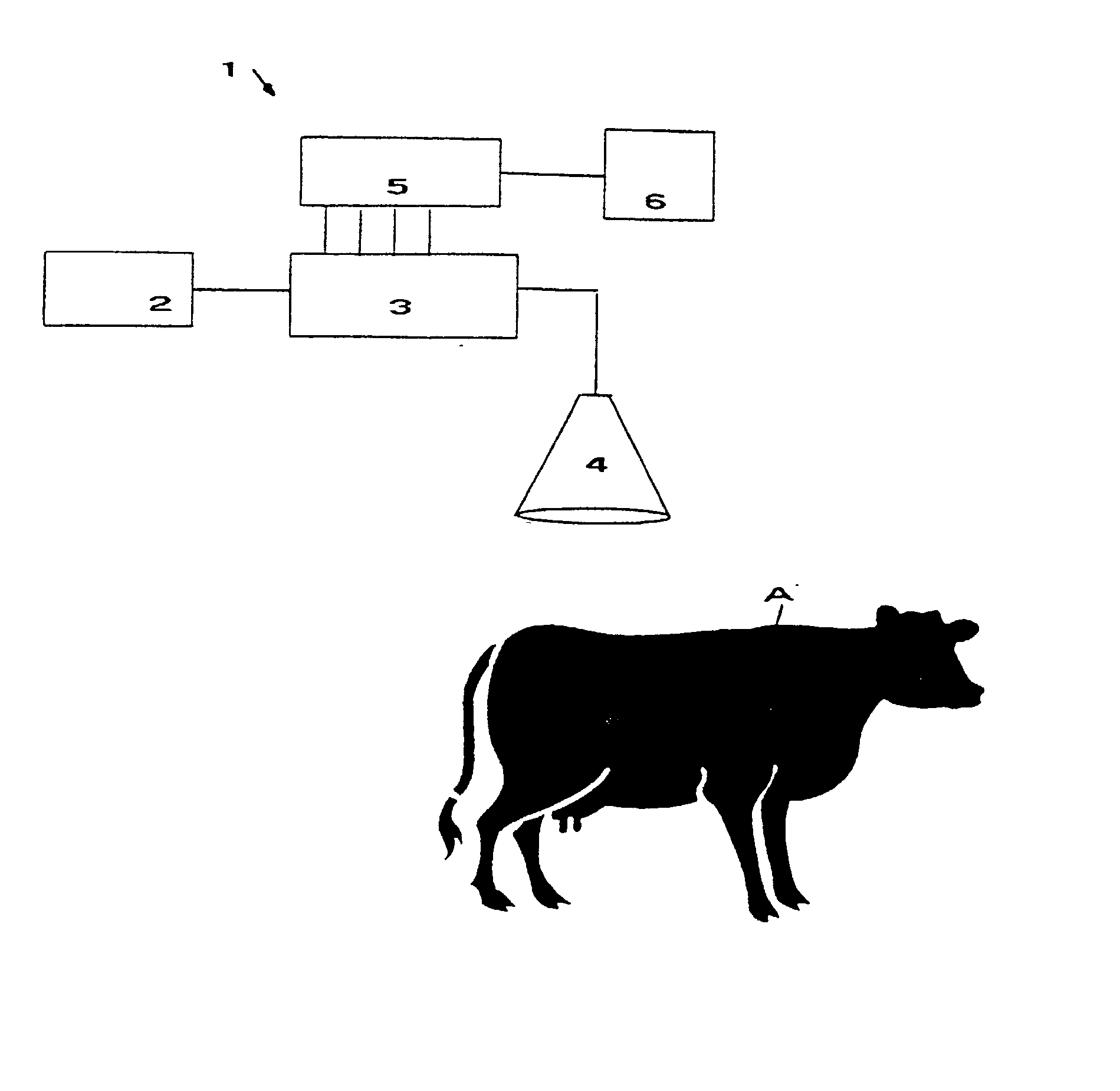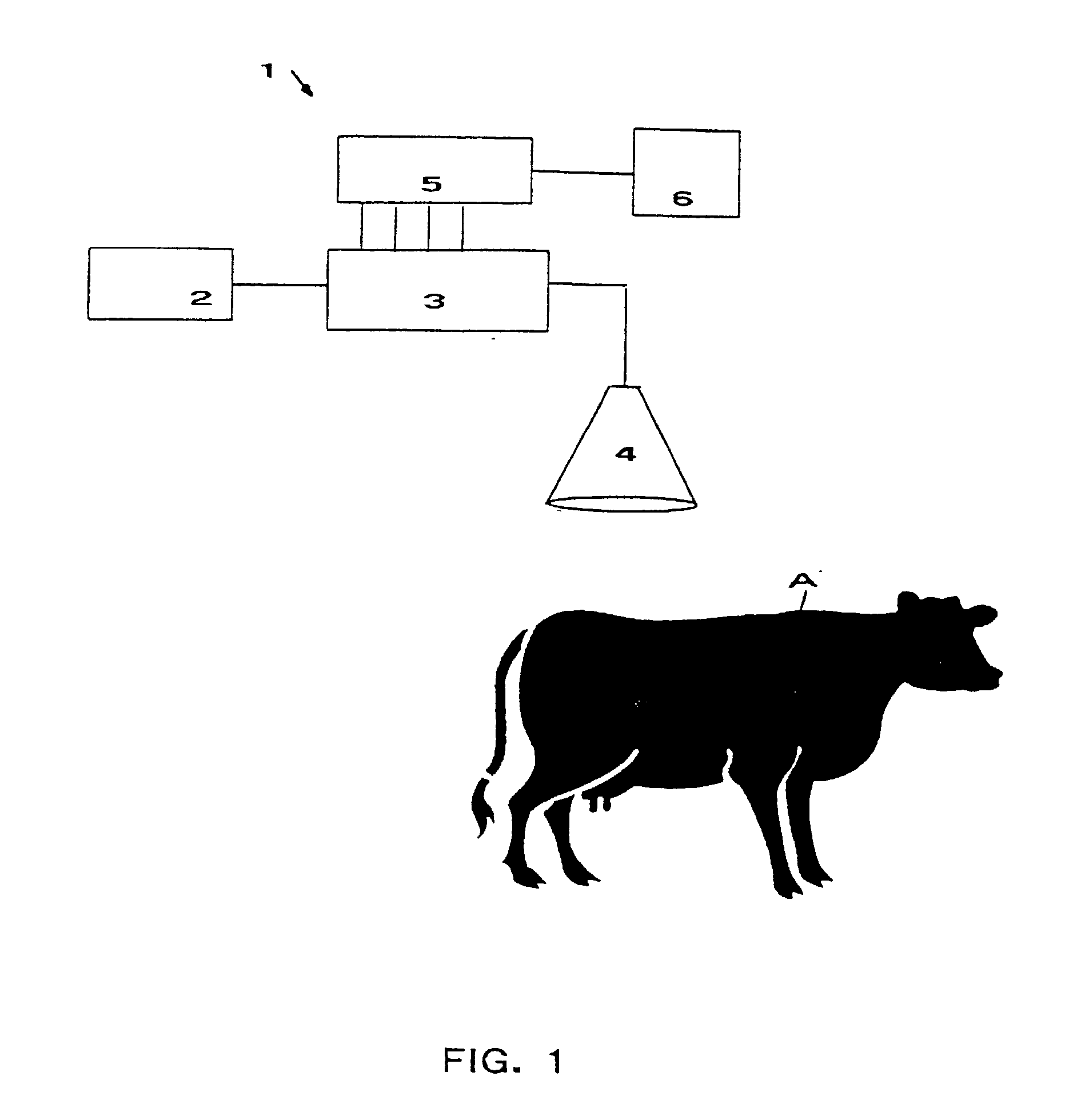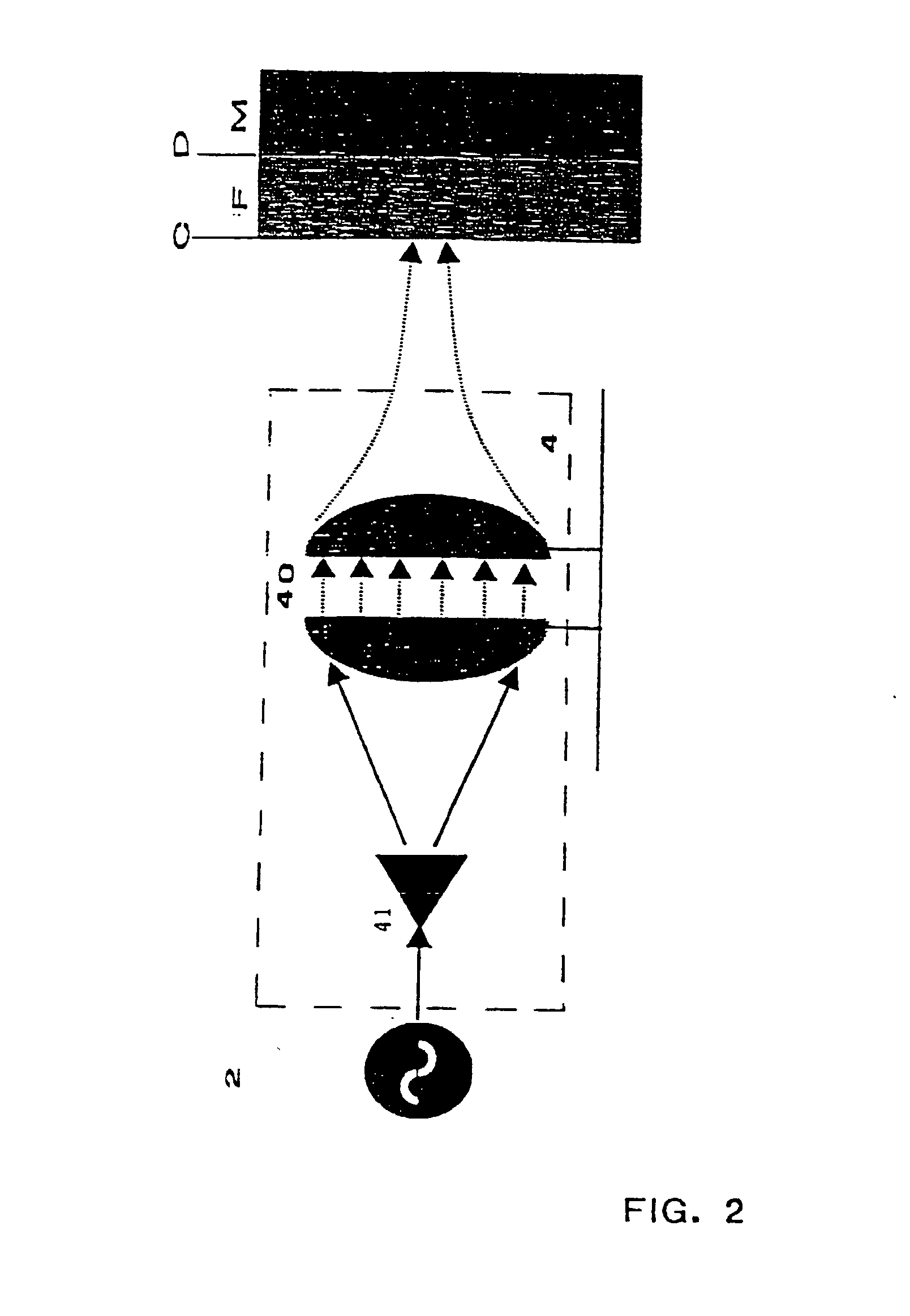Tissue sensor
- Summary
- Abstract
- Description
- Claims
- Application Information
AI Technical Summary
Benefits of technology
Problems solved by technology
Method used
Image
Examples
Embodiment Construction
[0045] Referring first to FIG. 1, a block diagram of a sensor 1, according to one aspect of the invention is shown. An animal carcass A, represented in FIG. 1 by a cow, which is to be measured to ascertain the depth of the fat layer F (see FIG. 2) is positioned near the sensor 1.
[0046] The sensor includes a microwave source 2 to generate microwave signals and communicate them to a sixport reflectometer 3 through a waveguide. The sixport reflectometer 3 communicates the microwave signals to a focussing antenna 4, which focuses the microwave signals onto a portion of the animal tissue.
[0047] Traditionally, the microwave source 2 would be used to generate a relatively wideband signal and the reflected energy would be analysed using Fourier Transform techniques. However, to reduce the effects of spurious reflections, provide a high resolution measurement and minimise the computational burden and associated cost and complexity, the present invention uses three discrete narrow-band signal...
PUM
 Login to View More
Login to View More Abstract
Description
Claims
Application Information
 Login to View More
Login to View More - R&D
- Intellectual Property
- Life Sciences
- Materials
- Tech Scout
- Unparalleled Data Quality
- Higher Quality Content
- 60% Fewer Hallucinations
Browse by: Latest US Patents, China's latest patents, Technical Efficacy Thesaurus, Application Domain, Technology Topic, Popular Technical Reports.
© 2025 PatSnap. All rights reserved.Legal|Privacy policy|Modern Slavery Act Transparency Statement|Sitemap|About US| Contact US: help@patsnap.com



